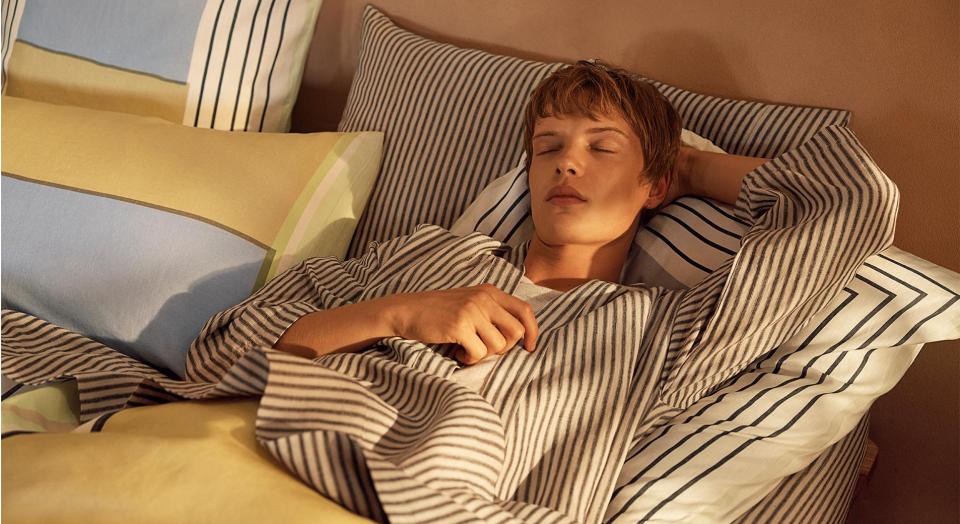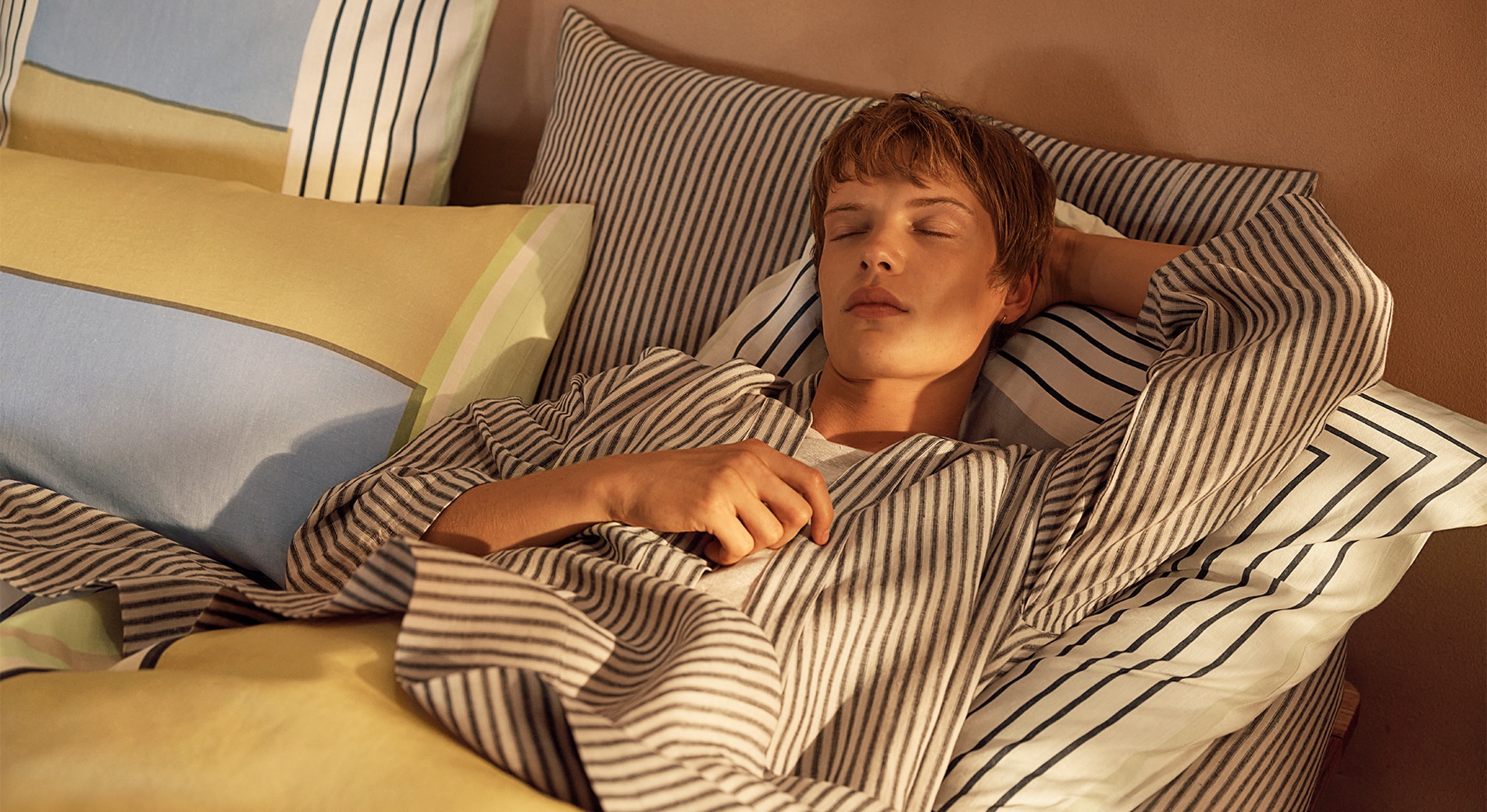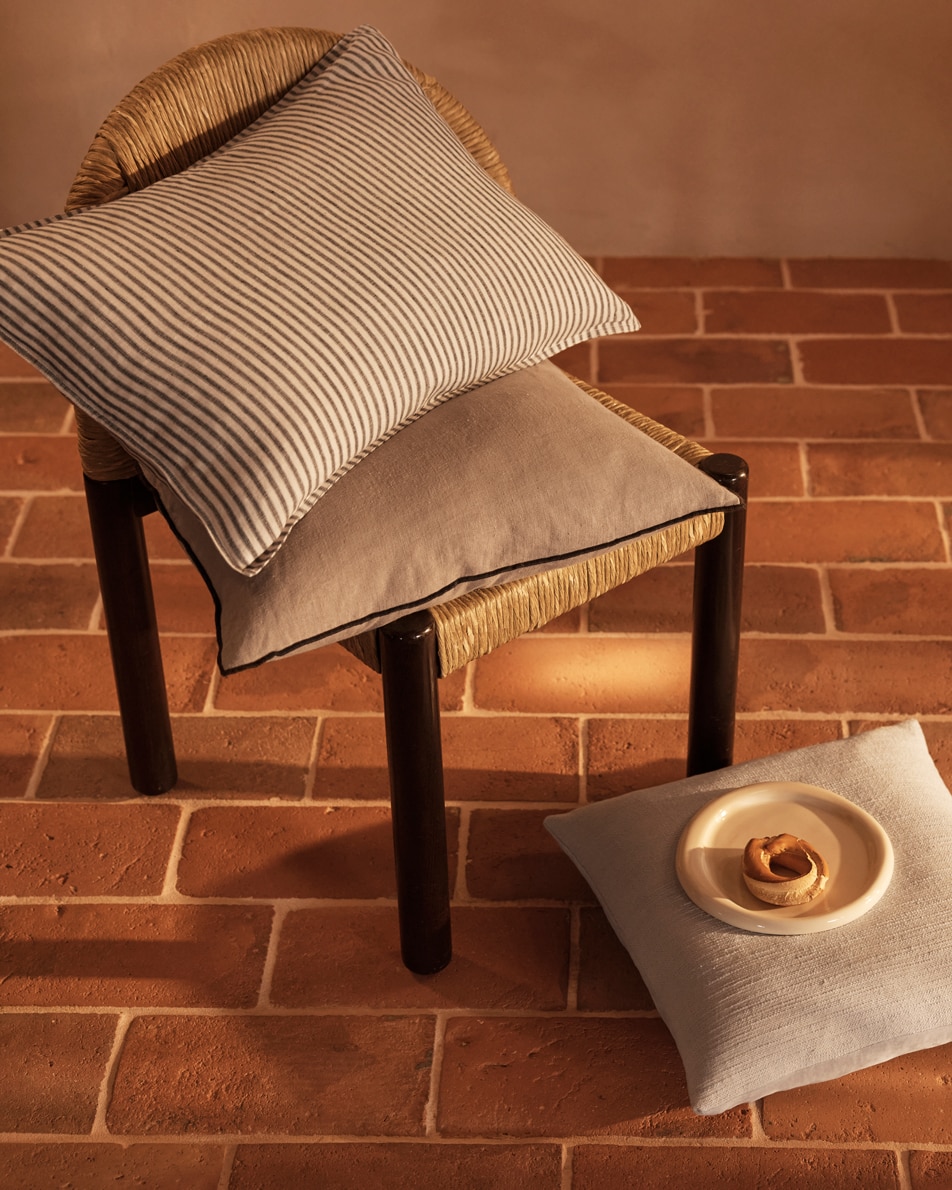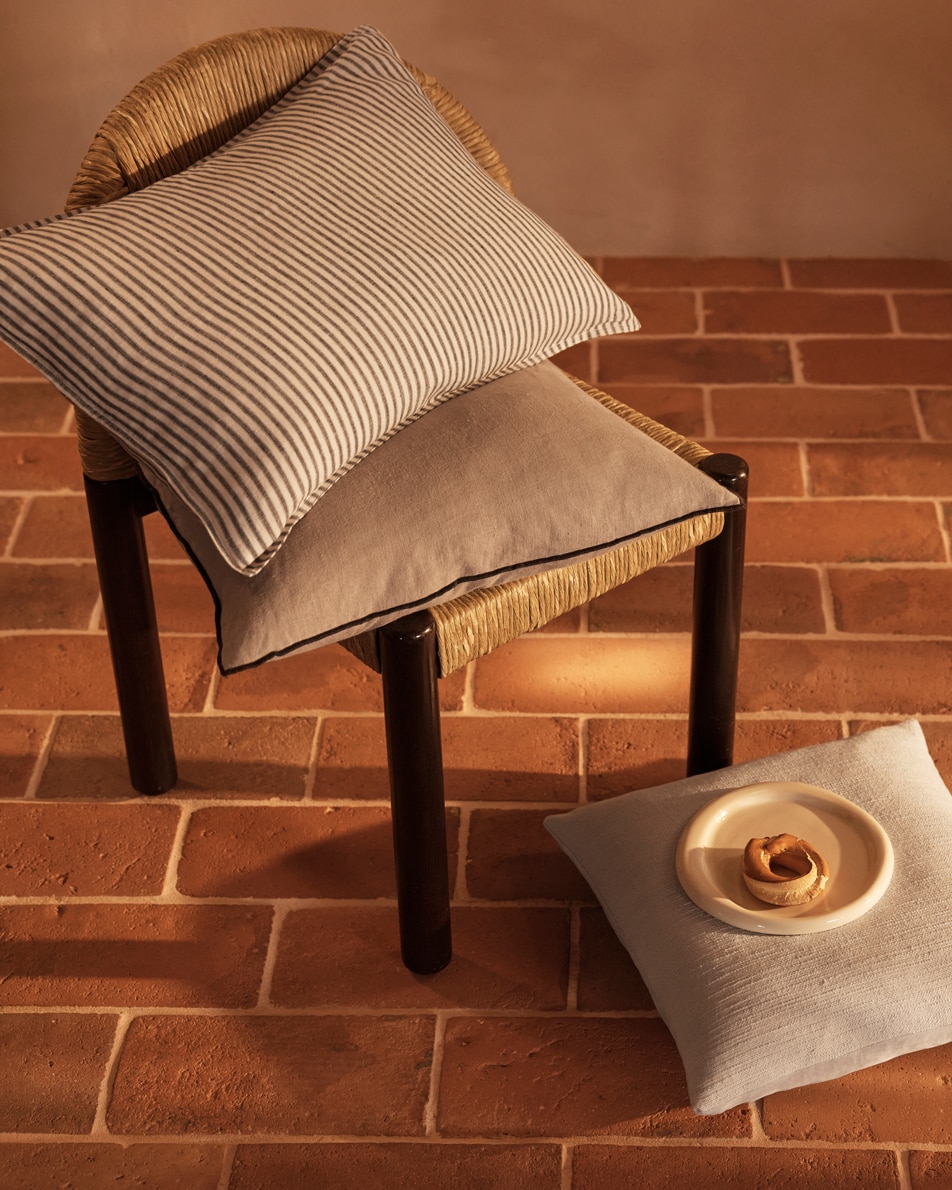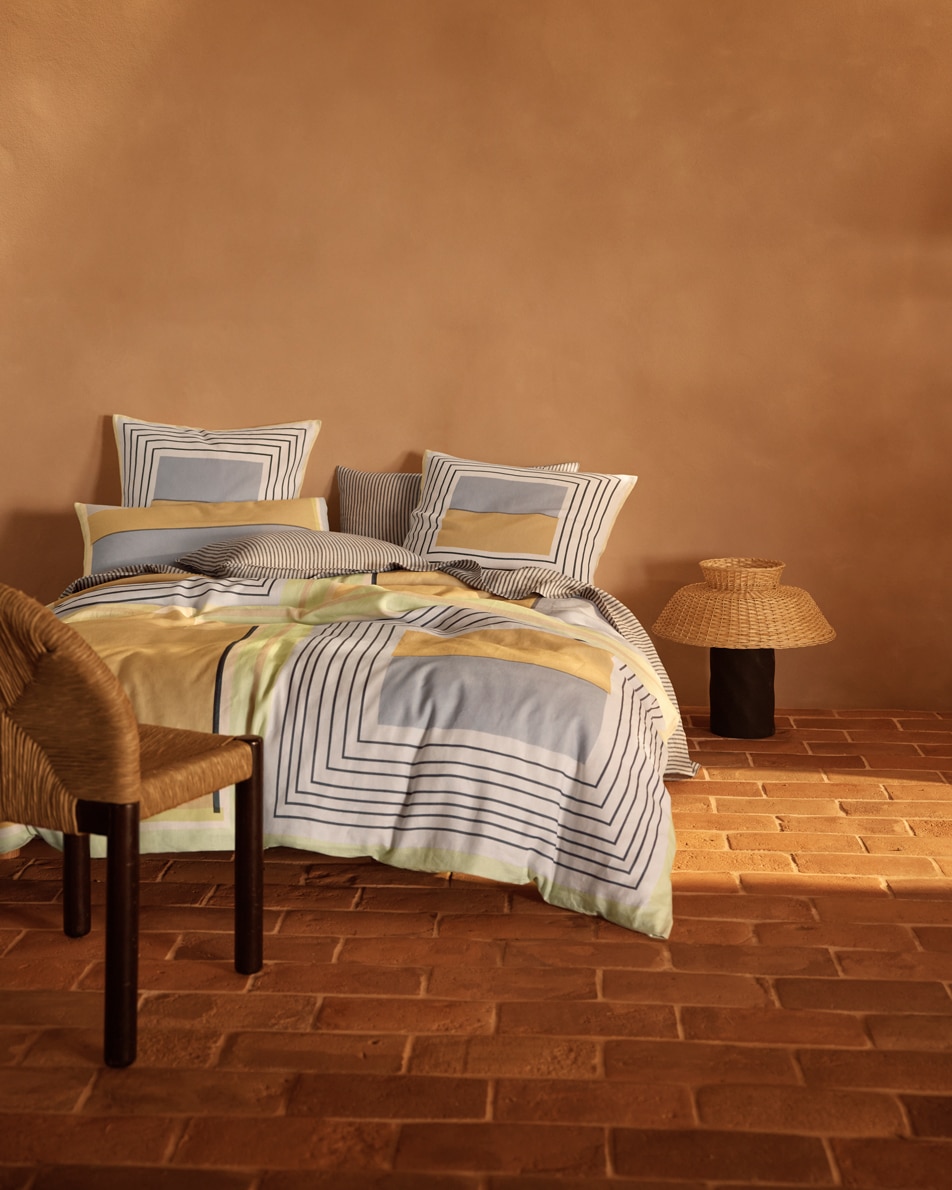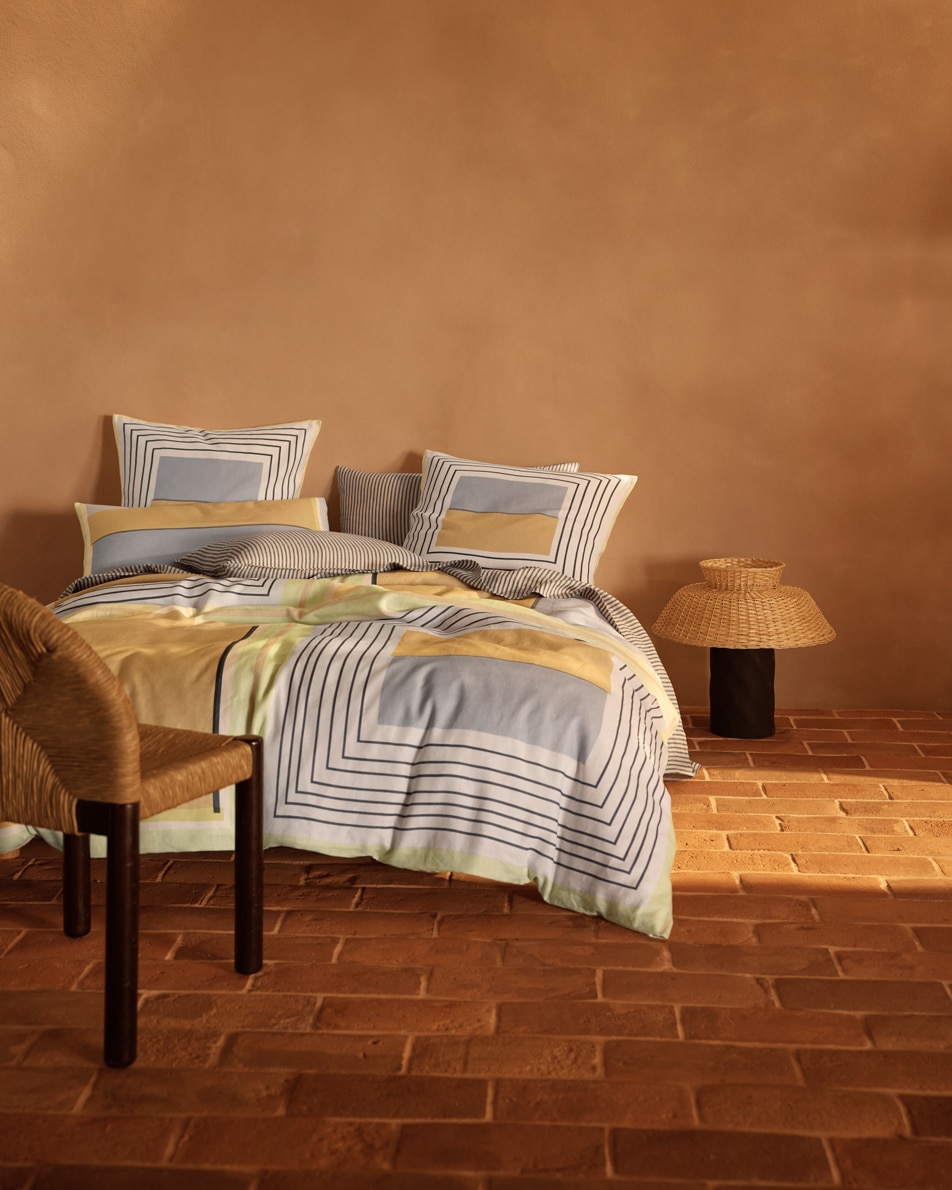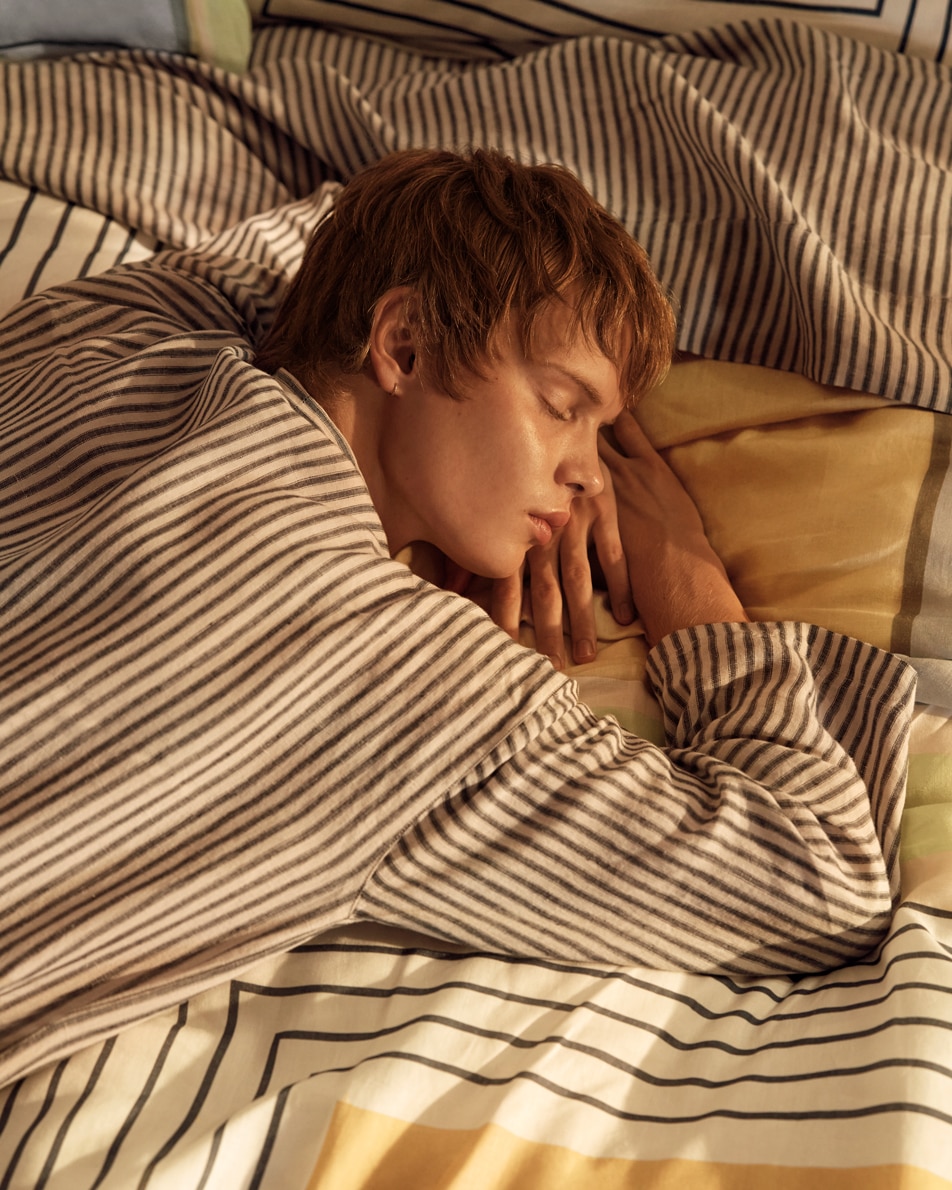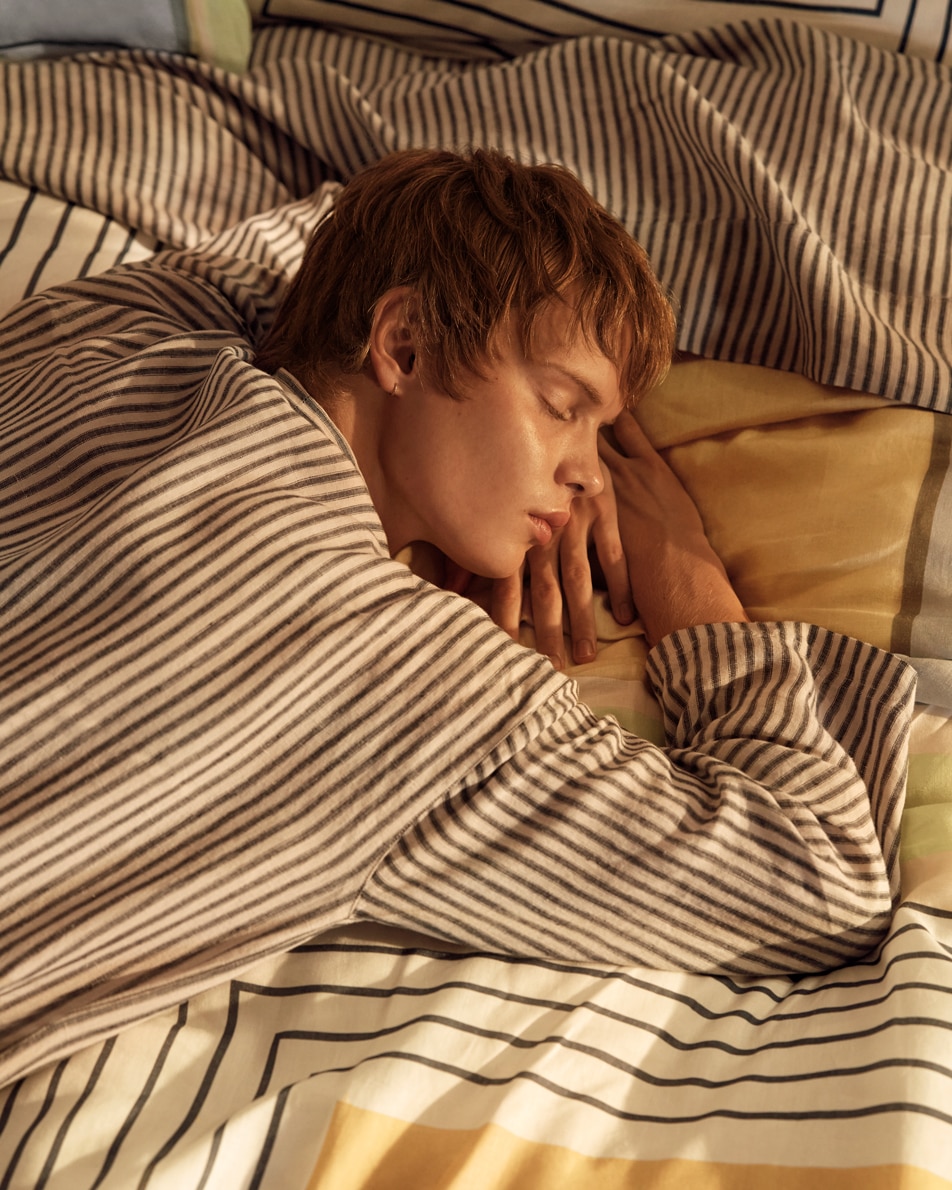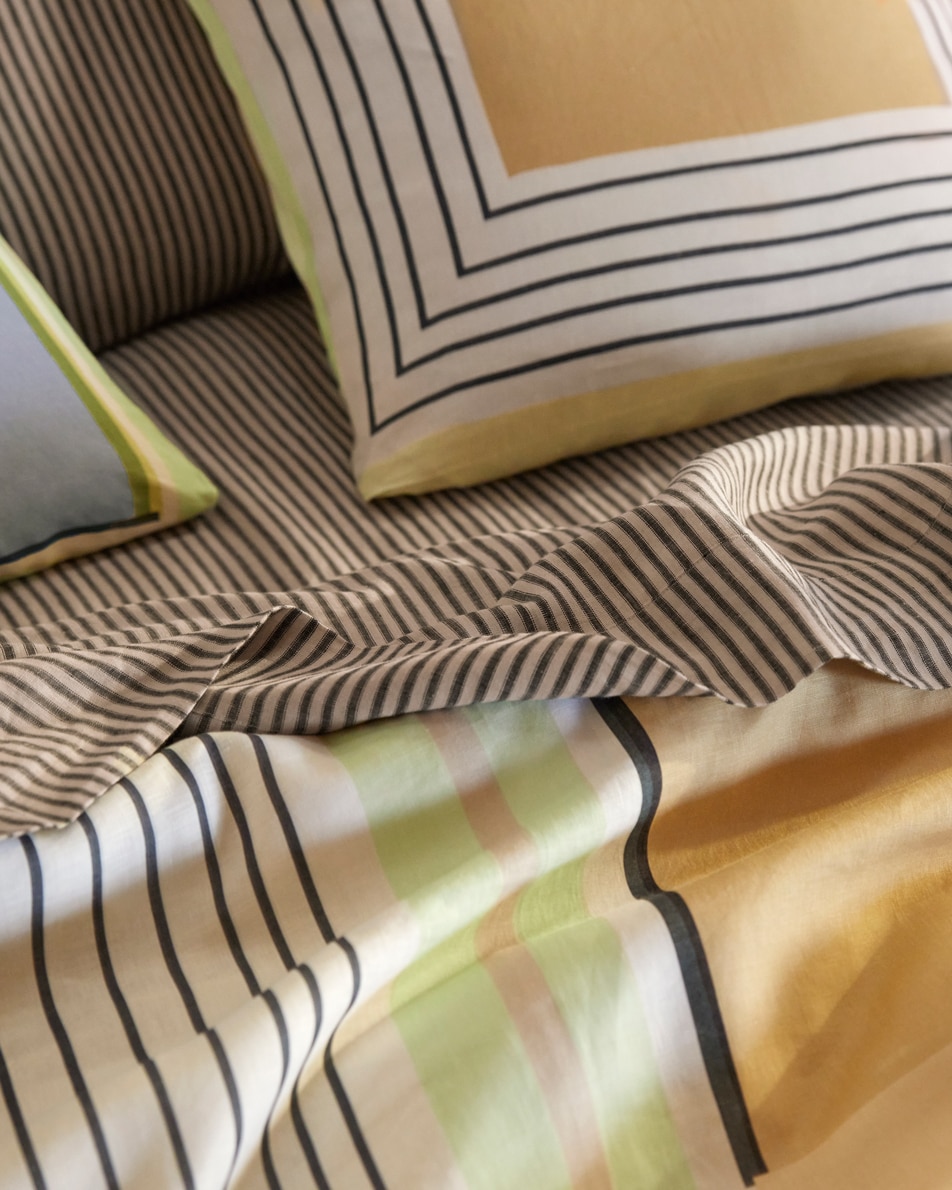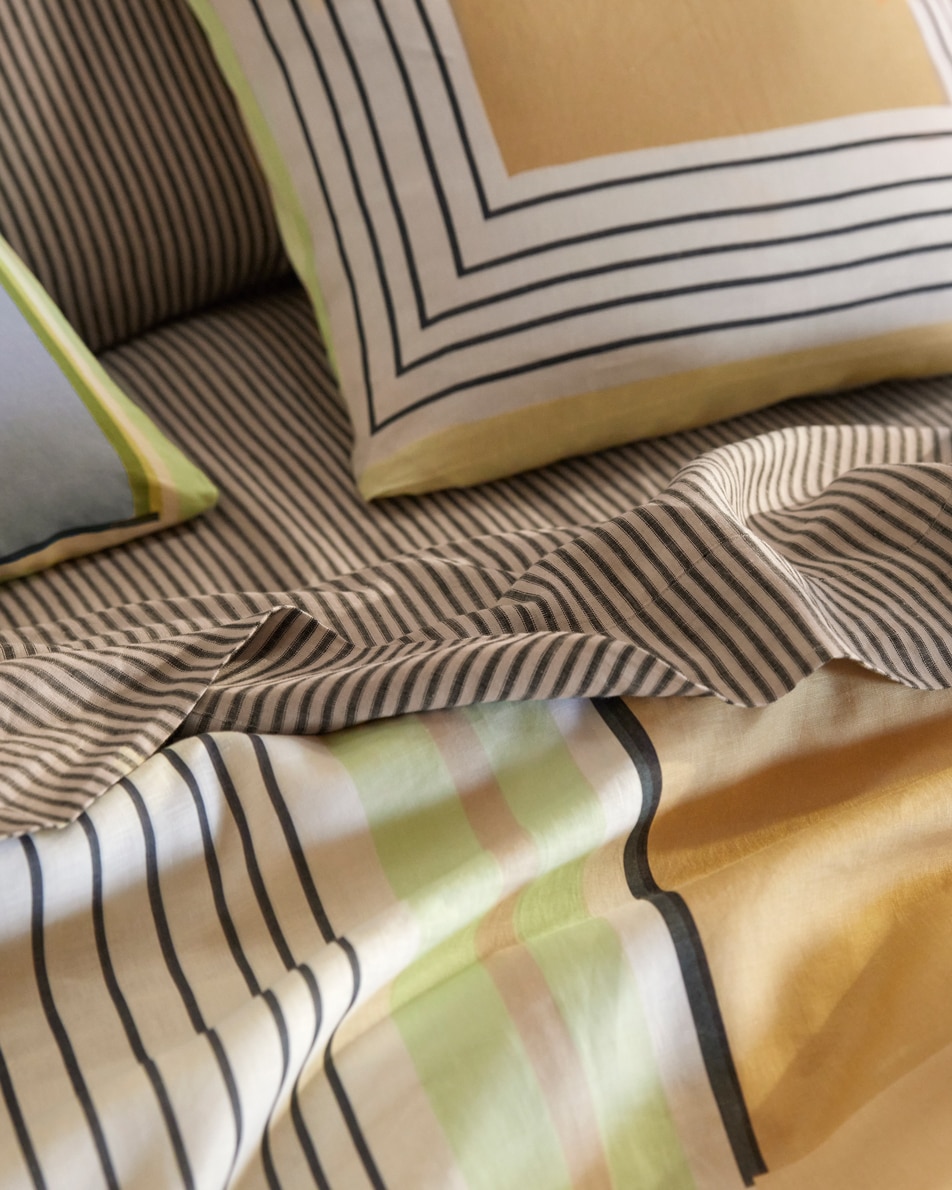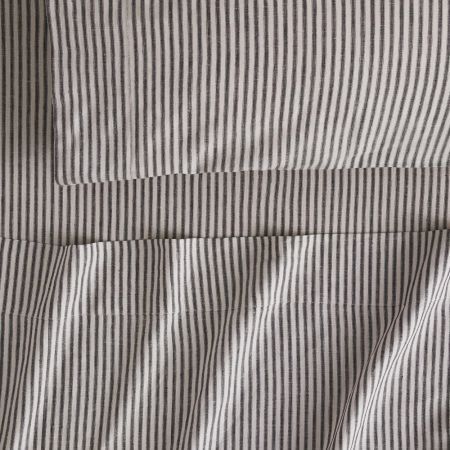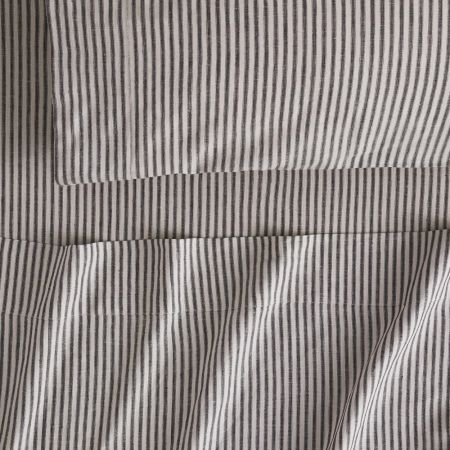3 Tips for Mixing Patterns in Your Bedroom
There are a lot of patterns out there, and somehow it seems there’s even more in the bedding world. You’ve got stripes — thick, thin, pinstripe, ticking stripe. You’ve got the three cousins of plaid, gingham and patchwork. There are spots, dots, circles. Then there’s the everlasting floral, with a million and one different versions.
From there, you can divvy them into two distinct categories: free-flowing designs, or geometric ones. When you think free-flowing, think of those with lots of movements — ones reminiscent of nature, like florals, foliage, landscapes and the like. Geometric is a bit more self-explanatory — repeating shapes, like squares, circles, even the aforementioned linework variations.
So when you have so many patterns, how do you choose? And from there, how do you mix and match patterns?
There is the classic approach of “60/30/10”, which, when it comes to mixing patterns in the bedroom or anywhere else in your home, advises you to stick to 60% of a favourite pattern, 30% of a secondary pattern, and then 10% of an accent.
But who's got time for maths when there’s patterned bedding to style? Let’s break it down into a few simpler steps, which won’t involve any percentages whatsoever.
Tip 1: Start Small
If you’ve never really been one for pattern before — and that’s fine, colour blocked beds have been a pretty massive trend for a few years now — then we recommend starting small.
Not necessarily small patterns, but the accent layers, whether on your bed or on your couch. That’s right, we’re talking about styling cushions and throws.
We’re guessing there’s probably some colour scheme to your space — in your living room, it may be the colour of your couch, and in your bedroom, it could be the quilt cover. As for how to mix and match patterns in that realm? Well, choose something of a similar colour palette — and then go for your favourite pattern.
Bring in some texture via another cushion or a throw; a boucle, knit, fringing, corduroy, whatever takes your fancy. It helps bring visual depth to a room.
Layer it atop said bed or couch and voila. You’ve styled your first pattern.
An important how-to for mixing and matching bedding is learning how to play with scale. As in, you don’t want to pair large florals with large stripes or spots, it’ll be a bit too busy on the eye. Large-scale florals with small-scale stripes or spots? Now that’s a whole different story.
Stripes — particularly a thinner version, like the ticking stripe — is a safe starting point if you’re a newbie to mixing patterns in the bedroom. Abbotson Ticking Stripe, with its industrial-inspired design, is an easy foundation; the monochromatic palette also acts as an easy (yet interesting) neutral.
Another hint: look for similar colour palettes. Don’t worry about getting out the colour swatches for exact matches, you can look to colour families (blues, greens, reds, the like) or go for something a bit broader — cools, warms, neutrals, metallics.
After you’ve chosen your base, from there, choose your large-scale pattern — in this instance, the Anteo Quilt Cover. This works due to the bold linework in the geometric print, while the more freeform shapes in the design provide a nice contrast against our uniform ticking stripe. At the end of the day, they’re both technically utilising linework, but in two very different ways.
Tip 3: Play With Complementary & Contrasting Patterns
Remember the aforementioned free-flowing vs geometric? Well, now it’s time to choose your own adventure. Behind door one, you’ll find contrasting patterns — this is where you pair free-flowing and geometric together, like mixing stripes and florals. Behind door two, we have complementary patterns, which is what you get when combining two patterns from the same category.
How do you style complementary patterns? Well, it’s not that difficult actually — it actually borrows from the above. Yep, it’s back to experimenting with different scales; mini-spots with larger ones, small detailed florals with big, abstract blooms.
A block-coloured cushion or throw can act as a great neutraliser here, the solid colour breaking up any busyness.
This is an easy way to refresh your space — particularly in a smaller room or a rental, where you’ve got those physical limitations. Bringing in a cushion or sham is a minor change, but it can make a major statement.
